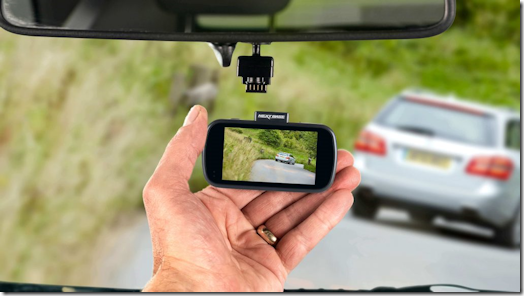
I first published this in 2019, but recently noticed people having dashcam issues which are likely connected with this topic. The original article follows.
A bit of advice to anyone using a dashcam. I see a lot of people complaining that theirs is playing up, and other advice to regularly reformat the card – which seems to get a lot of people recording again, at least for a while. I strongly believe that part of the problem is with the card, and not the dashcam. Specifically, people are using the wrong cards – and that’s true, even if they’re the ones their camera’s manufacturer is recommending.
I have always used SanDisk Extreme cards in my dashcams, and I have not had any problems. Extreme cards are not the cheapest, either. They’re pretty high spec. However, as a result of something I’d read online, I wrote to SanDisk and asked them if Extreme cards were OK to use in such dashcams. Here is what they replied:
Thank you for contacting SanDisk® Global Customer Care. Please allow me to inform you that for Dashcams & security surveillance cameras, we recommend to use SanDisk® High Endurance Memory Cards since these cards are specially developed for high endurance applications and continuous read & write cycles. These cards are built for and tested in harsh conditions and are temperature-proof, shock-proof and waterproof.
Also, please be informed that using Extreme or Ultra line memory cards on these devices void their warranty.
The text in that last sentence has been emboldened by me. At this point, it is worth noting that “high endurance” cards are special cards. They’re not easy to get hold of except through specialist suppliers, and your local PC World or Currys branch is unlikely to have them in stock. They cost more than normal cards.
But the upshot is that using Extreme (i.e. high-end “normal”) cards puts them under stress that they’re not designed for. It voids their warranty, but – more importantly if you read between the lines – there is a good chance they will malfunction or play up. I don’t know much about cards from other manufacturers, but I would lay odds that most people with dashcams are using the cheapest card they can get their hands on, and that means they’re not “high endurance” types – and probably not even branded. Most of the time I see people asking what dashcam to choose they always want a cheap one, and the one they end up buying often costs them less than I pay for a SanDisk Extreme card – so there’s no way they’re going to buy a card even close to that.
My current dashcam is the NextBase 612GW. It records in 4k, and on cards up to 128GB (so I get about six hours of footage in a write cycle). I have never had any problems with Extreme cards, but after the SanDisk advice I invested in a couple of Samsung 128GB high-endurance cards. I wanted SanDisk, but at the time they didn’t do them above 64GB. However, they do now (including a 256GB one) – and they’re reasonably priced, too.
When I originally wrote this, NextBase would not enter into discussion over the matter when I told them what SanDisk had said. They recommended using Extreme cards, and were (and still are) adamant that they work. However, I have noticed in their latest camera documentation that they strongly advise use of their own branded Class 3 cards, and point out that these are more expensive because of the extra work they are required to do. They don’t provide detailed specs, though, so I can’t say if they’ve used higher-rated cards than Extreme. At least you’d be covered under NextBase’s warranty if the card failed, so you’d have that extra level of security – which is missing if you use a SanDisk Extreme card.
I don’t disagree that Extreme cards have worked well for me, and they probably do for most other users, especially when they’re new. But the niggling problems people keep reporting are nearly always card-related. NextBase isn’t doing itself any favours by recommending Extreme cards (or if it is rebranding them), because if the camera doesn’t record people immediately blame… the camera. And even if it is shown that the card is faulty – even if they have been using one that cost them nothing and came in their cornflakes – they still blame the camera.
The bottom line is that SanDisk have told me very specifically that Extreme cards are not suitable for dashcams, and that using them for such voids their warranty. You cannot get much clearer than that. And it stands to reason that if you’re doing something that voids their warranty, the chances are it isn’t actually very good for them – and they break.
Does size matter?
From the same brand, probably not directly. However, if that brand tends to cause problems at some stage, then a smaller card will be over-written more frequently, and if the problem is ultimately related to over-writing a smaller card will present problems more often.
Does the brand matter?
You get what you pay for. If you buy cheap unbranded cards, compatibility and reliability is likely to be an issue. It’s no different to buying an unbranded kitchen appliance instead of a well known make to save money. You might get lucky, but if you don’t you have warranty issues and a non-functioning device.
Some unbranded cards may be fine. But not for everyone – you have to consider who made the camera. I use Nextbase, who are a major player, and they are very sensitive to the card manufacturer (as are most cameras, except that the cheap foreign ones don’t mention it, and you have no support if you run into problems). NextBase even go so far as specifying SD card model numbers which have been tested, so some SanDisk ones work, while other SanDisk ones might not.